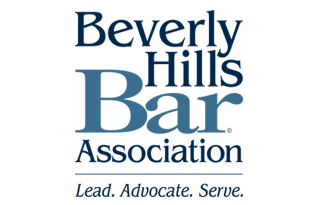At the age of 61, George, who for years had a thriving environmental practice representing large, publicly held transportation companies, now found himself with a diminishing practice. On the other hand, George’s colleague Cheryl, 43, who had a similar area of expertise, had more business than time.
George was perplexed; he had more experience, more industry accolades as a top legal practitioner, and a larger network than Cheryl. This dynamic was creating a palpable level of frustration between George and Cheryl. The missing link? The age of George’s clients and referral sources.
A recent analysis comparing practicing, outside lawyers and their corporate counterparts revealed that while Boomer-aged lawyers continue to practice well into their 60s, their corporate peers are retiring and being replaced by Generation X-aged professionals. With George’s long-standing clients and referral sources retiring, he no longer had a network to hire and refer him business. On the other hand, Cheryl was finding success because she better reflected the age of her corporate counterparts.
For the first time in history, there are four generations in the workforce: Silent, Boomer, Gen X and Millennial. Each has its own distinct markers, motivations and preferences. The generational shift, both within law firms and among clients, presents incredible opportunities for savvy lawyers and law firms who take the time to understand the different generations and who customize their business approaches accordingly. A lack of generational understanding results in internal strife, increased turnover and client loss.
The Silent or “Greatest” Generation: Born between 1925 and 1945, these professionals were largely conditioned by war and depression. It’s no wonder that they are generally risk averse, slow to innovate and need to be in control.
The Boomers: Born between 1946 and 1964, this group was defined by Woodstock and “free love,” and is the most idealistic of the generations. Raised in a lock-step system where they earned a higher status by putting in their time, they feel entitled to their position. For the most part, concepts of “sharing origination” or participating on a “client team” are foreign. Boomers are often criticized for “hoarding work” and delaying the transition of clients to younger generations due to a reluctance to retire.
Gen X: Born between 1965 and 1982, they are the most entrepreneurial of the generations as a result of being latchkey kids who, from a young age, were conditioned to fend for themselves. More independent and open to different approaches, Gen Xers are often criticized by Boomers for not “checking in” or “asking questions” when it comes to client matters. Instead, Gen Xers “just run with a project” requiring little oversight or supervision. While Boomers feel that value and leadership are earned through tenure, Gen Xers want to be recognized today for their contributions. The absence of opportunities leads this generation to leave their law firms in search of more entrepreneurial pastures—including starting their own firms.
Millennials or Gen Y: Born between 1983 and 2000, these professionals are more tech savvy than the organizations that employ them. They seek collaboration and accessibility, and would prefer to communicate via text than email or in person.
Five Recommendations For Leveraging the Generations
Leadership opportunities: Law firm leadership can and should leverage younger generations by identifying and providing roles within the firm that play to their strengths—practice/industry group chair (or co-chair) or participation on a committee (executive, compensation, diversity, etc).
Professional Development: Firms can provide business development, sales and client service coaching and training for their Gen Xers and Millennials. Doing so demonstrates the firm’s willingness to invest in them as the next wave of rainmakers and firm leaders. It also trains these senior associates and junior partners to establish their own client relationships early, thus adding to the firm’s bottom line.
Flexible Schedules: Understand that “out of the office” does not necessarily mean “off the clock” with Gen Xers and Millennials. Although they may leave the office at 6:00pm to go to the gym or be at home with their young kids, technology enables them to be connected to work at all times. In fact, Gen Xers and Millennials will often plug in and continue to work into the wee hours of the evening from outside the office.
Relationship Zippering: Boomers can invite Gen Xers and Millennials to join them on client visits, new business pitches, matter-closing celebratory dinners and client social events. Boomers can encourage their client contacts to bring similarly paired members of their teams to these events. “Zippering” or pairing peers at all levels of the law firm with the client encourages professionals to build relationships with one another, further strengthening relationships on both sides.
Evolving Your Compensation System: Incentivize attorney behavior at every level of the firm through compensation. If client transitioning is what you seek, limit Boomer compensation above 1,000 working hours a year and reward them for transitioning the 800-1,000 additional hours they would have normally worked to younger attorneys.
Similarly, provide incentives for younger attorneys who originate new work and new clients—whether or not they have partner status—by giving them a percentage of receipts from new engagements that they originate. Consider the words of John F. Kennedy: “A rising tide lifts all boats.”
The generational shift, both within law firms and among clients, presents incredible opportunities for savvy lawyers and law firms who take the time to understand the different generations and customize their business approaches accordingly. For those who don’t, continued internal generational strife, increased turnover and client loss will follow.
This article was originally published by The Recorder.


















